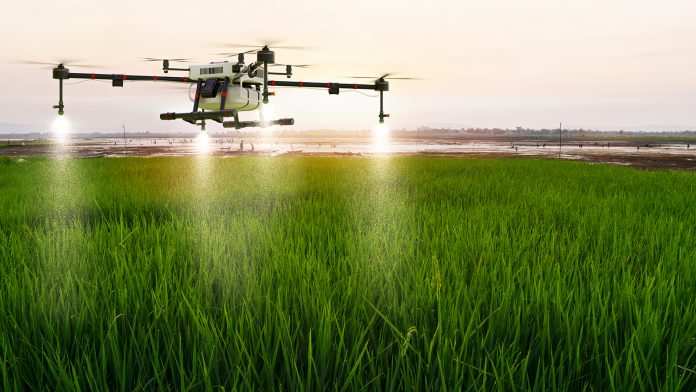Accelerating the green energy transition through the development of energy-efficient AI services and data spaces.
The energy demand of Artificial Intelligence (AI) systems is a growing concern, especially with the increasing use of Deep Learning and other computationally intensive algorithms. This is becoming increasingly evident with the wide adoption of large language models that use terabytes of data for training,5 and therefore a large amount of computing power and capital investment, which then translates into significant carbon dioxide emissions.
With the increased use of AI across several domains, from manufacturing, to banking, to intelligent transport systems, Europe urgently needs to develop new data management solutions that will harness the transformative potential of AI, whilst meeting the European Green Deal objectives.1
Energy demand of AI services
Addressing the energy demands of AI services extends beyond model training, encompassing inference, data storage, retrieval, and data centre cooling.
A key mitigation strategy involves designing AI algorithms with lower energy consumption. Energy efficiency, quantified by the ratio of energy consumed to output or work produced (e.g., energy per prediction, per transaction), requires a multifaceted evaluation considering various factors and metrics.
Measuring, for example, the energy required to train an AI model involves instrumenting the hardware, or using power models that provide energy consumption estimates based on hardware specifications, collecting data on energy consumption during the training process. Then the data is normalised based on the size and complexity of the model, and the results are reported along with other performance metrics.
Operational energy consumption can be monitored using energy monitoring tools, power meters, or specialised software, facilitating estimation of the service’s carbon footprint based on energy source.
Additionally, energy-efficient AI systems must be designed with scalability in mind, allowing for flexible adjustments to demand without a significant rise in energy consumption. Balancing efficiency and performance is the key to progress. It entails ensuring that a service is both energy-efficient and maintains or surpasses performance standards while consuming less energy. This guarantees acceptable levels of accuracy and speed.
Developing energy-efficient AI
Techniques for improving the energy efficiency of algorithms include hardware acceleration, model optimisation, and data compression.2-10 AI developers now have a responsibility to mitigate the environmental impact of their technology.
In this context, the GREEN.DAT.AI project11 aims to channel the potential of AI towards Europe’s sustainability goals, by developing novel Energy-Efficient Large-Scale Data Analytics Services, ready-to-use in industrial AI-based systems while reducing the environmental impact of data management processes.
A number of challenges are posed by large-scale data analysis, including data transfer (bringing the data and computational resources together), controlling access to the data, managing the data, standardising data formats, and integrating data of multiple different types to accurately model industrial systems.
The project vision is to design smart AI-powered applications that allow computing to move from data centres to edge devices. Shifting computation from the cloud to devices reduces the flow and potential leakage of sensitive data, leads to faster inference with a shorter reaction time and drives innovation in applications where these parameters are critical.
Core to the project innovation are federated learning mechanisms, which utilise distributed data for inferring information based on decentralised collaborative modelling algorithms. The ambition is to enable data sharing while minimising data transfer. To achieve this, a novel Toolbox of reusable energy-efficient AI services is being developed including:
- AI-enabled data enrichment;
- Incentive mechanisms for data sharing;
- Synthetic data generation;
- Large-scale learning at the edge/fog and large-scale time-series analytics;
- Federated and Auto ML at the edge/fog;
- Explainable AI/Feature Learning with privacy preservation techniques;
- Federated & Automatic Transfer Learning which allows both the reduction of data transfer costs and a better control of data security and privacy;
- Adaptive FL for Digital Twin applications; and
- Automated IoT event-based change detection and forecasting.
The project will also develop a benchmarking and evaluation framework for measuring and comparing the energy efficiency of different AI services, addressing the need for more accurate energy consumption models and the development of energy-aware AI algorithms.
Real-life industrial pilots
The energy-efficient AI services will be assessed across four industries – Smart Energy, Smart Agriculture, Smart Mobility, and Smart Banking –through six distinct pilots, all leveraging the potential of data spaces.
PILOT 1: Renewable energy
In the renewable energy sources domain, data are experiencing unprecedented growth, generated by diverse energy systems. These data hold immense potential for applications in reliability and performance monitoring, predictive maintenance, and asset management of power plants.
Additionally, they play a crucial role in advancing power forecasting methods. The pilot envisions implementing large-scale collaborative analytics across data from various owners. This will enable short-term time series forecasting and will contribute to the optimisation of power plant performance.
PILOT 2: Electric vehicle charging
The concurrent charging of multiple electric vehicles (EVs) in urban areas can strain the electrical grid. Implementing intelligent charging strategies becomes imperative to regulate charging rates and schedules, drawing insights from local data as well as external sources like driving patterns and data gathered from crowdsensing platforms. Energy-efficient AI systems have the potential to enhance battery and charging management, optimising vehicle charging during periods of high renewable energy supply.
The adoption of edge AI on its own may lead to an increase in the cost of EV chargers, owing to high computational requirements. To mitigate this, the pilot will employ frugal AI solutions across diverse data sources, fostering distributed intelligence. This approach aims to refine forecasting techniques and charging management strategies, ultimately fostering greater reliance on renewable energy sources for EV charging.
PILOT 3: Smart farming
In the agricultural sector, AI applications rely on data sourced from remote sensing technologies such as satellites, drones, and in-situ sensors. These applications encompass a wide array of tasks, including the detection of water stress, monitoring crop diseases, and mapping weeds, all the way to predicting crop yields.
This is achieved through: Real-time generation of fertilisation maps tailored to soil and crop requirements for optimising fertilisation; early detection of plant pests and diseases through (near) real-time object assessment, achieved by fusing satellite imagery and drone inspections; and prognostication of soil health status and determining optimal harvesting times. The pilot will integrate federated learning techniques with digital twin solutions, reducing the volume of necessary training data and shortening model training times.
There are three primary objectives, firstly to enhance the learning of various plant pests and disease detection models by drawing insights from different users with diverse crops and pest/disease challenges. Secondly, to generate a comprehensive soil health status map by integrating data from various sources and finally, to optimise fertilisation strategies based on different crops and soil conditions.
PILOT 4: Water management
AI models can be used to optimise irrigation by assessing soil moisture levels, after integrating satellite imagery with precipitation data. Integrating accurate weather information is also crucial for effective irrigation, as it impacts evapotranspiration.
In farming, there is a pressing need for precise water measurement and treatment, including disinfection and oxygenation. Novel AI techniques are needed for determining suitable water types for different crops and optimising treatment towards increased water value. The pilot will develop AI-powered services for:
- Monitoring water quality by combining data from various sources (lakes, springs, collectors, rain pools, etc.). IoT sensors will measure micro-location values such as DO, ORP, pH, TDS, temperature, gases, and electrical conductivity;
- Utilising data from water sources alongside open-source data (river measurements, public utility information, pollution levels, meteorological data, etc.); and
- Optimising water management for energy and water conservation, ultimately benefiting agriculture stakeholders and helping them to adapt to climate change.
PILOT 5: Urban mobility infrastructure planning
Emerging mobility models, including electric bike-sharing services, necessitate AI-driven applications for optimising the operation of docking and charging infrastructures. This involves implementing intelligent reservation systems for controlled charging.
The pilot is centred around fine-tuning the energy demand within an electric bike station network through advanced prediction techniques. Understanding usage patterns will yield crucial insights for prioritising charging at specific stations.
The envisioned application will provide information from data analysis encompassing routes, distances, frequency, and average durations of bike usage for achieving network stability and aid in strategically locating new charging stations. AI services will draw from various data sources including fleet management, recharging habits, journey analysis, and vehicle lifetimes to enable accurate prediction of energy demand and enhance infrastructure capacity and shared vehicle availability while mitigating overconsumption peaks during recharging.
PILOT 6: Smart banking
The banking sector’s prediction systems face challenges due to a reliance on human intervention and the diverse, sensitive nature of customer data. These factors make it difficult for existing systems to effectively discern default patterns. Moreover, any biases present in the training data can be perpetuated within the algorithms.
To address these issues, the pilot focuses on enhancing fraud detection systems. It aims to achieve this by employing trustworthy and interpretable feature-learning methods for both classification and regression tasks, thereby mitigating bias (Explainable AI).
Green AI-ready data spaces
Data spaces can serve as a digital enabler for the deployment of data-driven collaborative services. They provide a trustworthy framework for sharing operational data across decentralised networks, whilst introducing semantic interoperability. The latter is particularly important for establishing a common understanding of data meaning and context across diverse sources, domains and AI services.
Through data spaces data sovereignty, transparency and fairness are ensured, creating the ground for stakeholders’ adoption. Data connectors facilitate seamless data exchange services while incorporating robust data security enforcement mechanisms.
GREEN.DAT.AI will combine data spaces with the Toolbox of AI Services, yielding significant benefits.
Smarter data exchange and integration
Data spaces provide a unified framework enabling diverse data from various sources to be discovered, aggregated, integrated, and analysed. When coupled with AI, integrated data become a powerful resource for generating insights and making informed decisions.
Improved predictive capabilities
AI algorithms excel at recognising patterns and making predictions. By leveraging data spaces, AI models have access to a broader and more comprehensive dataset. This leads to more accurate and reliable predictions, which can be invaluable in fields like forecasting, recommendation systems, and anomaly detection.
Increased efficiency and automation
Data spaces combined with AI enable the automation of tasks that would be time-consuming or impractical to perform with traditional methods. This includes tasks like data cleansing, feature selection, decision-making processes, and distributed data processing.
Such architectures leverage the computing capabilities distributed over the edge-fog-cloud stack to cope with extreme-scale data, by storing and processing the data as close as possible to the data sources. This may also apply to data pre-processing for AI applications, involving more energy-efficient normalisation, feature extraction, handling missing values, and dealing with outliers.
GREEN.DAT.AI envisions demonstrating an AI-ready data space, thus a data management framework designed to support the use of energy-efficient AI techniques. This infrastructure will enable the efficient processing, analysis, and sharing of data across different organisations in a way that is compatible with AI workflows.
The key features of an AI-ready data space include interoperability, data quality, data security and privacy and data discovery. Overall, an AI-ready data space is an important component of an organisation’s AI strategy, as it provides a foundation for the effective use of energy-efficient AI techniques in data-driven workflows. Together, these technologies are expected to unlock new potential for existing and future AI applications that address emerging business and societal challenges.
About the team
The project consortium comprises a diverse and multidisciplinary group of 17 partners hailing from ten different countries. These partners bring together a wealth of complementary technical and scientific expertise, spanning various sectors including banking, mobility, energy, and agriculture.
- INLECOM INNOVATION – COORDINATOR
- UNIVERSITY OF PIRAEUS RESEARCH CENTER
- CONSIGLIO NAZIONALE DELLE RICERCHE
- KONNECTA SYSTEMS
- ATOS IT SOLUTIONS AND SERVICES IBERIA
- POLYTECHNEIO KRITIS
- ITC – INOVACIJSKO TEHNOLOSKI GROZD MURSKA SOBOTA SI
- CAIXABANK SA
- UNIVERZA V MARIBORU
- SERVEO SERVICIOS SA
- AEGIS IT RESEARCH
- RED HAT
- INESC TEC
- WABOOST
- CNET CENTRE FOR NEW ENERGY TECHNOLOGIES
- NETCOMPANY-INTRASOFT
- SUNESIS
- SPHYNX TECHNOLOGY SOLUTIONS
Project Coordinator: Ioanna Fergadiotou, Ioanna.fergadiotou@inlecomsystems.com
Project Manager: Despina Brasinika, despina.brasinika@inlecomsystems.com
Communications: Panagiotis Katrakazas, p.katrakazas@aegisresearch.eu
References
- A European strategic long-term vision for a prosperous, modern, competitive and climate neutral economy, A Clean Planet for all,
COM(2018) 773 final, Brussels, 28.11.2018 - A. Alsedais et al., A Comprehensive Study of Energy-Efficient Deep Learning: Challenges and Opportunities, 2020
- A. Haj-Ali et al. Towards Energy-Efficient Machine Learning: A Methodology for Benchmarking and Analysis, 2019.
- B. Rana et al., Towards Energy-Efficient Machine Learning: A Survey of Techniques and Metrics, 2021
- M. Bavarian, H. Jun et.al, Efficient training of language models to fill in the middle, Open AI,
- M. Zhang, J. Li, A commentary of GPT-3 in MIT Technology Review 2021, Fundamental Research, Volume 1, Issue 6, 2021, Pages 831-833
- S. Benedict, Energy Efficient Aspects of Federated Learning – Mechanisms and Opportunities. In K.K. Patel, et al. (eds.) Soft Computing and its Engineering Applications. Springer, 2021
- R. Schwartz et al., Green AI, 2019
- T. Nguyen, A. Jump, D. Casey, Gartner Research Excerpt, 2023 Emerging Tech Impact Radar, 2022.
- Y. Zhang et al., Energy-Efficient Machine Learning: A Review, 2021
- GREEN.DAT.AI Project Grant Agreement

This project has received funding from the Horizon Europe research and innovation programme under GA 101070416 (DG CONNECT). Funded by the European Union. Views and opinions expressed are however those of the author(s) only and do not necessarily reflect those of the European Union or European Commission. Neither the European Union nor the granting authority can be held responsible for them.
Please note, this article will also appear in the sixteenth edition of our quarterly publication.








